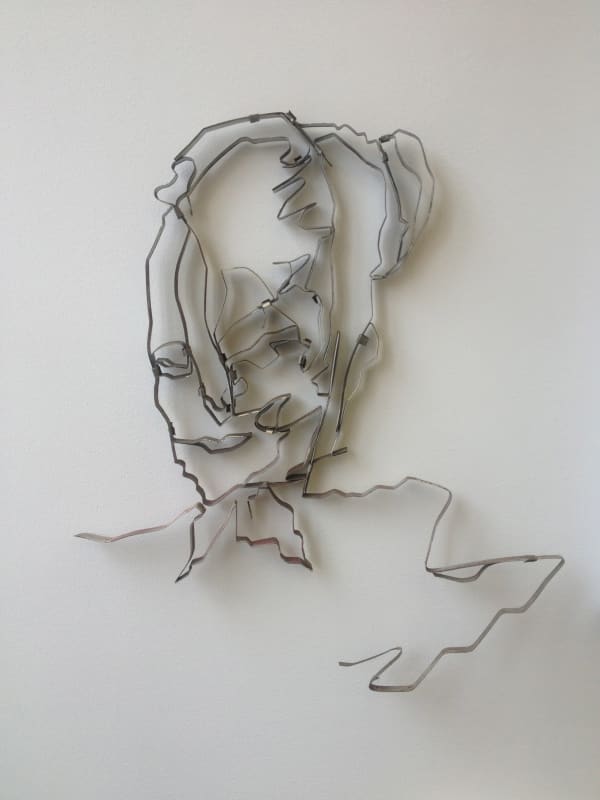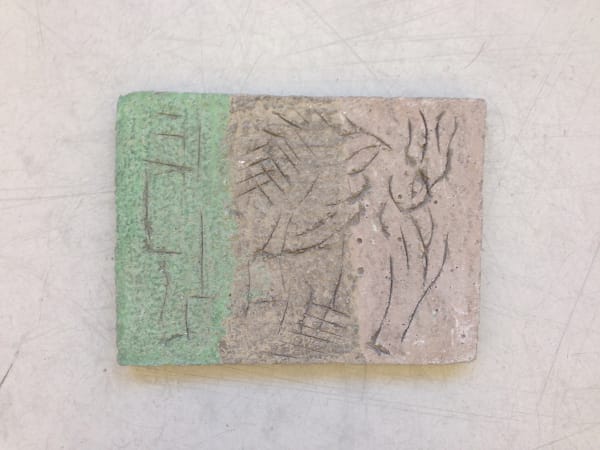Siri Derkert – The personal is political : Stockholm
Andréhn-Schiptjenko is proud to present the second exhibition of works by Siri Derkert (1888–1973), spanning the period of 1940 to 1970.
Siri Derkert is known for her highly personal expressionist style and for her monumental public commissions, often of a political nature. She is one of the few prominent female artists in Swedish art history. Her most well-known works are perhaps “Carvings in Natural Concrete” at the subway station Östermalmstorg (1961-65) and “The Sweden Wall” (1967), both in Stockholm.
Siri Derkert’s evolution from an elegant contemporary modernism in the 1910s to the pronounced political public art she became famous for in the 1960s, is a testament to the various ways an artist can relate to the private and the political.
A feminist approach seems to have been de rigeur for the group of young artist students, Siri Derkert belonged to before the WW I. At a time when Sweden did not have female suffrage and marriage meant that a woman was placed under her husband’s guardianship, Derkert’s work was further formed by the personal experience of being a single mother of three children during the 1920s. During the 1920s and 30s, it is her own family and close friends who are the most important motifs. Like Vera Nilsson, Siri Derkert has her first solo exhibition in the early 30s, and the two artists share the art world position of painting mothers that in “ugly” forms create and shape their own personal reality. They are seen as expressionists, psychologically penetrating artists and painters of individual and personal life.
If Siri Derkert’s 1930s art is dominated by children as motifs, it is not just about a mother’s need for models, but just as much about the three children’s need for adults. The children go to school and are taken care of by grandparents and aunts, but above all by Derkert, their single mother, who creatively combines family life with her own work. When the children reach adult age towards the end of the 1930s, Siri Derkert’s life eventually enters a completely new phase. The political commitment in the form of feminism that had been obvious for a long time, is given a new dimension during the last years of the 1930s through the Spanish Civil War and Derkert’s meetings with refugees from Germany and becomes a concrete expression in response to the aggressive expansion of right wing-nationalism in Europe. During WWII Derkert’s political involvement eventually adopts new forms through participation in adult education and organized political work.
The images from the private sphere of family and friends from the 30s, 40s and 50s are the result of an experience that in Derkert’s world had an obvious political dimension: women’s rights or feminism. Feminism was not just about equal rights in professional and public life, but also about the single woman’s right to care for and raise her own children – and her right to create a room for artistic work.
At the Fogelstad Female College, Derkert participates in the educational activities during the years 1943-1954. It is led by the The Fogelstad Group, a group of politically active, but unaffiliated, intellectuals, among these parliament women, female doctors and authors, with the ambition of gathering women from all classes of society to their courses. Derkert usually works with a living model, whether it is drawing, painting or sculptures shaped in clay and participants become regular models for her. While the circuit of motifs is now being expanded seriously outside family life, Derkert also continues to portray her own family: the old parents, the deaf daughter’s companions, and eventually the grandchildren, sometimes with their parents, sometimes alone. Siri Derkert’s political portraits from the 40s, 50s and 60s are greatly stylized figures in an expressive manner.
In the 1960s, the group of models is expanded to a larger circle of Swedish contemporary politicians and intellectuals, as well as some international. The exhibition features several Fogelstad images, a relief of famous social democratic politician Alva Myrdal as well as a portrait of the American Civil Rights Movement activist Stokely Carmichael, who visited Stockholm in 1967, and was one of those who pioneered the philosophy of Black Power.
Siri Derkert represented Sweden in the Nordic Pavilion at the Venice Biennale in 1962 and had an extensive retrospective exhibition at the Stedelijk Museum in Amsterdam the same year. Her works have been shown in two retrospectives at the Moderna Museet in Stockholm (1960 and 2011). Derkert’s works can be found in many Swedish museums, among them Nationalmuseum, Stockholm, Moderna Museet, Stockholm, Malmö Art Museum, Gothenburg Museum of Art, Skövde Art Museum and the Museum of Sketches, Lund.
-
 Siri DerkertInstallation view "The Personal is Political", Andréhn-Schiptjenko, Stockholm, Sweden, 2019
Siri DerkertInstallation view "The Personal is Political", Andréhn-Schiptjenko, Stockholm, Sweden, 2019 -
 Siri DerkertInstallation view "The Personal is Political", Andréhn-Schiptjenko, Stockholm, Sweden, 2019
Siri DerkertInstallation view "The Personal is Political", Andréhn-Schiptjenko, Stockholm, Sweden, 2019 -
 Siri DerkertInstallation view "The Personal is Political", Andréhn-Schiptjenko, Stockholm, Sweden, 2019
Siri DerkertInstallation view "The Personal is Political", Andréhn-Schiptjenko, Stockholm, Sweden, 2019 -
 Siri DerkertInstallation view "The Personal is Political", Andréhn-Schiptjenko, Stockholm, Sweden, 2019
Siri DerkertInstallation view "The Personal is Political", Andréhn-Schiptjenko, Stockholm, Sweden, 2019











